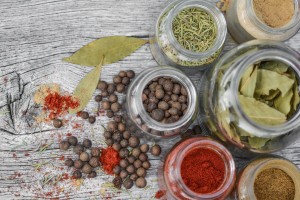
Spicing up markets through standards for fairer trade
Codex Alimentarius food standards boost consumer confidence and open markets to farmers and producers
Rome: Christopher Columbus was actually on a quest for the exotic spices of the East, when he stumbled upon the Americas. The renowned explorer’s geographically misguided mission more than five centuries ago was just one example of how the hunger for spices has left its mark, often violently, on the history of large parts of the world.
Nowadays, whether we pound them with a pestle and mortar, simmer them in stews or bake them into cookies, the spices we use are as much a part of our cultural identities as our languages, favourite songs or sports teams.
But how confident can today’s consumers be that the little spice jars we buy in our local markets aren’t harbouring harmful levels of pesticides or other contaminants? And how can the farmers cultivating this array of flavours navigate the global trading system to earn a decent living?
These are some of the issues being addressed this month by the Codex Alimentarius Commission. This Commission, which oversees the global food standards compiled in the Codex Alimentarius, or “Food Code”, is adopting new standards on several commonly-used spices and culinary herbs: oregano, dried ginger, cloves and basil.
As well as levels of pesticides, the criteria also focus on microbial contaminants such as Salmonella and Bacillus cereus, which can infiltrate the spices at various stages of production.

So far, safety and quality standards have been set for a number of spices and culinary herbs including dried black, white and green pepper, cumin, thyme and dried garlic. It’s likely to take a while longer yet to cover all the 116 spices and culinary herbs which the Codex Committee on Spices and Culinary Herbs (CCSCH) has identified.
But the process’s true importance lies in bringing order to a maze of different international standards and enabling spice growers to access the markets where they can get the fairest prices for their quality produce.
Most spices start their journey to our plates from small farms in developing countries. They go through various stages of processing from winnowing and sifting, to electromagnetic cleaning and even sometimes methods like irradiation to remove pathogens.
India, which has been a driving force and host country of the Codex spice standards committee, had spice exports worth more than USD 3.6 billion in 2020-2021. And officials say the country hopes to increase the value to USD 5 billion next year.
Other countries see huge potential in increasing their spice exports too. “Nigeria’s Spice Industry, an Untapped Goldmine,” blared the headline of one recent article in the country’s media.
But globally recognised standards remain critical to the prospects for sustainable trade expansion. Without them, spice growers can often find themselves losing out when their consignments are rejected for export and having to scramble for less demanding markets.
The standard-setting process for spices will pay important dividends for growers, says India’s M.R. Sudharshan, Chairperson of the CCSCH. It will “provide confidence to small producers of these products and facilitate market access, particularly, for several developing countries in all the regions.”
Adhering to Codex standards involves “updating the guidance or training documents” drawn up by food safety officials and experts who guide the industry “to reflect current knowledge and current practices,” says Sudharshan.
Some spice growers in India have already received training supported by Food and Agriculture Organization (FAO) and other international organizations to help them make more judicious use of agricultural inputs and keep their use of pesticides in line with international norms. That way they can increase yields but still respect standards rather than resorting to chemicals that might sabotage their chances of exporting to prime markets.
The CCSCH is just the most recently formed commodities committee under the Codex, whose mission is to protect the health of consumers and ensure fair practices in the food trade, boosting countries’ economies and farmers’ livelihoods.
The Codex Alimentarius Commission itself dates back to 1963. FAO and the World Health Organization work together to provide the scientific advice on which its standards are based.
Crucially, from a trade perspective, Codex standards are recognised as benchmarks by the World Trade Organization in its rulings. “If a country wants to challenge the standards, it must do so based on the science,” says Patrick Sekitoleko, a Food Standards Officer with the Codex Secretariat.
The Codex Commission is only growing in importance as FAO implements a raft of measures to help countries transform how our food is produced, distributed and consumed.
With these latest spice standards, yet more farmers, as well as consumers, will benefit from the Codex’s role in providing reassurance and levelling the trade playing field.
Source: the FAO News and Media office





